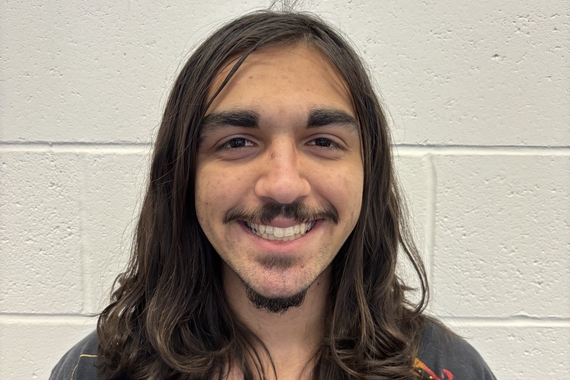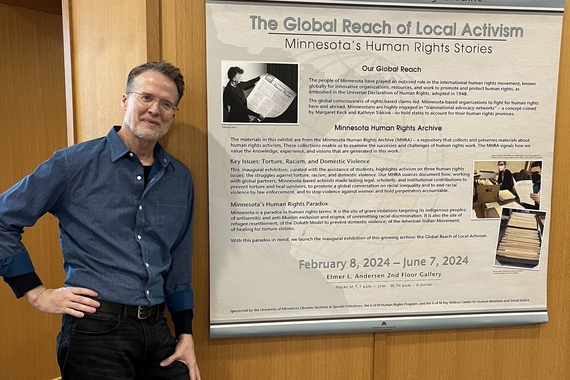Top Five Reported Events
To better understand why the media reported on certain cases and not others, we examined the most highly reported disappearances from each state.
Coahuila
The most highly reported cases in Coahuila related to group disappearances, and sympathetic victims. Families who advocated for justice in these cases were factors in heightened press coverage as well. The five disappearances that received the most press coverage in Coahuila were (1) a case of 12 painters who disappeared together (16 articles); (2) three young people who disappeared together (19 articles); (3) a three-year-old boy, Johan, (16 articles); (4) four members of the A family (19 articles); and (5) the case of Toño (19 articles).
Group cases were the focus of significant press coverage in Coahuila. For example, the case of the twelve men who were disappeared in March 2009, while seeking house painting work door to door in Coahuila garnered significant attention. The case has been used by various news outlets to illustrate the extent of the crisis of disappearances in Coahuila.
Another group case involved the disappearance of the A family in August 2009, including Esteban A, Head of Security and Maintenance of the Social Rehabilitation Center in Saltillo, Coahuila, his eight-year-old son Brandon, and two of his brothers, Gerard and Gualberto. The case garnered attention from news sources and official institutions alike, as an investigation into the disappearance was opened by the State Attorney in Coahuila. The coverage also noted the role of Esteban’s wife, who spoke out about the pain of losing her family and the difficulty of searching for them alone.
In Coahuila, visible press coverage of disappearances was also linked to the demands for justice of family members of the disappeared. Reports after Toño’s disappearance in January 2009, for instance, demonstrated the persistence of his family, which resulted in criminal justice proceedings and the arrest of perpetrators who were connected both to organized crime and prominent businesses in Coahuila. Another case that resulted in criminal proceedings involved the disappearance of three students, though only one of their names is provided in the press (Héctor). A man named Oscar Omar was detained for his involvement in the case, but was liberated as he was charged with extortion and a fine of 11,000 pesos. This follows the efforts made by one of the three, Hector's sister Brenda, who has participated in protests on disappearances, spoken out about this disappearance, the inaction of officials, and death threats that she has received.
Coverage of the disappearance of Johan, the three-year-old boy who disappeared in October of 2015, was high given that disappearances of children this young are rare. This disappearance also received attention from investigative authorities in Coahuila, evidenced by official searches, the activation of an Amber Alert, and the offering of 299,464 pesos for his return.
The efforts of family members is notable in the press coverage of several individual cases. Families who are searching for their loved ones, such as the parents of Toño and those of Johan, are often highlighted in press reporting. The attention given to such efforts allows the press to highlight the lack of help that authorities provide in investigating these disappearances. Arturo R, the father of one of the 12 painters who disappeared, participated in a public event in which family members of the disappeared demanded justice from the Coahuila State Attorney.
Increased coverage leads to interesting information for the public. For example, the press coverage of the disappearances of the twelve painters noted that the crimes occurred in areas known to be surveilled by both security cameras and state authorities. This kind of observation provides an insight for the public into the potential collaboration between public officials and members of organized crime; and raises questions about the quality of the investigation in this case.
Guerrero
Guerrero is the location representing the most highly reported disappearance case in Mexico’s history: the 43 students of Iguala. Among other reported cases, family advocacy, high profile victims and group disappearances were central to press coverage in the state. The most reported cases in Guerrero were about the disappearances of (1) Armando, an ex-police officer and businessman (12 articles), (2) Azucena and Luis, a young couple and their baby (15 articles), (3) three members of a family that included Ranferi H, former politician and social justice activist (11 articles), (4) Maria Luiz O, a feminist and human rights activist (11 articles), and PRD party member (13 articles), and (5) Hector, a local activist (11 articles).
In Guerrero, unusually, two of the cases that received higher levels of press attention involved individuals not groups. But these were not just any individuals; they were activists working in the field of human rights. Maria Luiz disappeared in March 2018, member of the Feminist Network (Red de Activistas Feministas), publicly spoke out about violence against women after suffering from years of domestic abuse herself. Hector, 30 years old at the time of his disappearance in March 2015, was a graduate of the University of Guadalajara, where he studied anthropology. He was also a collaborator in the Regional Center of Human Rights "José María Morelos y Pavón", and an active participant in the fight for communities’ access to water.
Family and NGO advocacy also played a role in coverage of Hector’s case. His mother, Carmen, who lost both of her sons to disappearances, has participated in press conferences and spoken out about her experience, denouncing the inaction of public officials. She additionally has worked with and received support from groups such as Asociación Siempre Vivos and El Centro de Derechos Jose Maria Morelos y Pavon. Individual activists, such as Manuel O., have expressed their support of the investigation of Hector’s case in local press conferences.
Among the group cases, the story of Amando stood out, when he was disappeared in November 2017 with five other men who were bull riders travelling to Guerrero. His family last heard from him when he called to let them know of his whereabouts. His call was cut short when he spotted a group of local police officers known to be involved with the criminal group Guerreros Unidos. Armando’s family members were also visible advocates on his behalf. His brother Alejandro spoke against the crime in press conferences, appearing for instance with the Collective of Social and Student Organizations in the National Press Editors Union. Alejandro also filed official complaints with the Public Ministry in Coahuila, the State Attorney General, and the Human Rights Commission.
Gruesome disappearances involving families received press attention among the Guerrero cases. The disappearance of the H family in October 2017 ended in the burning of their bodies and car. Ranferi H was the ex-president of the local chapter of the PRD political party. Similarly, the brutal nature of the murders involved in the disappearances of Azucena and Luis, and their baby was considered newsworthy; the mother was found dead with her baby (left alive) in the car. Also of note in this case is that its investigation was supplemented by reports offered by witnesses of the detention of this family by armed men. The validity of such testimonies was denounced by officials investigating the case.
Nuevo León
In Nuevo León, the events that received the most press coverage involved sympathetic or high profile victims, and group disappearances. The advocacy of family members and NGOs was a factor in press coverage in these cases. Among the most reported cases were the mayor of Zaragoza, Coahuila, Saul V (20 articles); a federal police officer, Juan H (16 articles); a San Pedro businessman Damián G (16 articles); a group of 11 police officers in Apodaca (21 articles); and a group whose disappearances implicated the Navy (16 articles).
The case of the businessman Damián G was noteworthy for several reasons. The victim was disappeared in August 2012 from San Pedro, the richest municipality of Nuevo León and, as such, considered to be the safest area in the state. Damián G studied at a high school called “El Irlandés" which is a very exclusive, private school in San Pedro, and is an indicator of the high social and class status of the victim. Nuevo León is known for its industry and a lot of business owners live in the state, Damian in particular had a construction business. Unusually in the context of the Mexican criminal justice system, in which judicial convictions in cases of enforced disappearances are rare, this case led to the conviction of the identified perpetrators, each of whom received a sentence of 55 to 90 years in prison. These sentences, however, were later dismissed by a judge. The press articles covering the release of these perpetrators highlighted this reality and painted the case as being emblematic of the impunity that plagues the judicial system.
The disappearance of the mayor of Zaragoza (PRI party), Coahuila, Saul V in January 2011, received a lot of press attention given the victim’s high profile. Just as in the previous case, there was an official investigation into this case. After the investigation, the mayor’s widow received compensation for his death. Other mayors were assassinated later in the year (2011), and this case was emblematic of violence targeted at the political arena. The victim was found dead in Galeana, Nuevo León, two days after his disappearance, allowing for the press to report a resolution in the case.
The coverage of the group disappearance of drug dealers in March 2010, is unique in the sense that victims with explicit links to organized crime tend not to receive much press coverage nor sympathy from the general public. Indeed, the majority of the articles about this case focused not on the drug dealers, but on the disappearances of others who were connected to the Navy. One victim was reportedly tortured while in the Navy’s custody. In Mexico, the Navy had been considered to be a more trustworthy institution than the Army or police, who are more frequently connected to corruption and organized crime. Also, various articles about this case reported on the involvement of the Comisión Nacional de los Derechos Humanos (National Human Rights Commision) in investigating the crime. The Commission sent investigators to Nuevo León to clarify the facts, and examine the possible violations committed by the Navy.
The disappearance of the 11 municipal police officers from Apodaca in 2011 by organized crime received considerable attention. The case not only victimized a large group of government employees, including a high-ranking officer (Apodaca Police Director), but it took place in a dramatic way. Initially a group of three officers (the Director’s guards) were disappeared. Eight other officers including the Director set out to find their colleagues, and they were disappeared as well. The coverage included detailed information about the state’s response, including investigations and trials, and the location of their bodies in 2016. The information on perpetrators also generated media attention since it showed an alliance with organized crime (Los Zetas), police, and ex-military personnel, and details of brazen violence, as the victims were tortured, assassinated, and their bodies were burned.
Another highly covered case involved an individual federal police officer, Juan H, who was 23 years when he was disappeared in February 2011 in a hotel where he was quartered with 300 other officers in San Nicolás de los Garza. Press coverage of his disappearance included descriptions of the activism and vocal stance of his mother, who acted in partnership with a human rights organization. While Juan H disappeared with his co-worker, Juan Luis L, the other officer’s case was covered in only 6 articles, half the coverage Juan H received. Juan H’s mother was interviewed in almost every article.
Jalisco
In Jalisco, the press reports focused on the disappearances of young victims and students, and family advocacy on their behalf. The most highly reported case in Jalisco was the three film students in Guadalajara. In addition to this newsworthy case, the most highly reported disappearance cases from our database in Jalisco included Daniela, a student in the University of Guadalajara High School, (14 articles); Pedro, another high school student (16 articles); three students from Zapopan (12 articles); Luis Antonio and Andrés, two high school students, (21 articles); and a group of seven people (18 articles). In most of these events, the victims were found dead or alive. Most reported cases were from 2013-2014 when many young people disappeared in the region, or 2018, close to the time of the high profile case of the three film students.
The case of Daniela’s disappearance in September 2014 in the municipio of Zapotiltic, and that of the three young men from Zapopan highlight the ways in which advocacy, both from civil society and the families of the victims, increases the visibility of specific cases in the media. In Daniela’s case, family members fiercely advocated for justice on her behalf, raising her case’s coverage in the press. Daniela’s case generated sympathy with the public because she was a minor (17 years old) and a high school student. The government of Jalisco gave various press conferences and updates on the investigation of Daniela’s disappearance, unusual in reported cases of enforced disappearances. The press covered these conferences and highlighted impunity. They reported, for instance, that the state’s attorney tried to minimize the cause of her disappearance and tried to blame her absence on a “family matter”, even though her family adamantly denied any instability at home. Other articles featured details about Daniela’s life by interviewing her parents and used humanizing language that described her as social and caring, and that she was also preparing her application to medical school wanting to become a pediatrician.
The disappearance of three students from Zapopan was highly covered because the event took place in April 2018, less than a month after the disappearances of the three film students, which generated national and international interest. Another element that generated press attention was civil society advocacy through protests and campaigns. The students at the University of Guadalajara included this case in the protests that were already happening for the case of the film students, and also organized a social media campaign to actively raise this case’s visibility. Only one of the three young men (José Armando P) was a student at the university and his two other friends (Francisco Javier B and Juan Rubén T) were not, but the school community rallied around the case and called for their safe return, which generated a lot of press. The three young men were finally found alive three days after their disappearance.
Two other events of disappeared students in the municipio of Zapopan one in 2013 and the other in 2018, all high school students, were the case of Pedro R, and then the case of Luis Antonio O and Andrés B, who were all reported as found (alive and dead). In each of these cases, increased press coverage had to do with the fact that all of these victims were minors and students. Pedro R disappeared in March of 2018, one day after the three film students from University of Guadalajara and others around the same date, which generated massive protests that drew a lot of press attention. He was found alive four days later, but no further details were provided by the Attorney General's office of Jalisco as reported by the press. Regarding the other case, both high school students Luis Antonio O and Andrés B were found dead in July of 2013. Much of the press coverage focused on the reported motive of the crime: the two young men supposedly bullied the son of a drug lord (Sinaloa Cartel), who attended school with them. There are a couple of articles published years after the event, talking about impunity in the case which has not received justice yet.
In the case of the seven youths who disappeared in July of 2013 in the same region of Jalisco, the high media coverage grouped multiple separate instances of disappearances of youth between the ages of 18-22. These victims disappeared in the same area, during the same day, so the press grouped them as the “7 of Lagos de Moreno” (the municipio where the disappearances occurred). It is unusual for coverage to center on the crime of enforced disappearances in the area, instead of the individual profiles on the victims. It is not clear if the perpetrators were connected, but organized crime individuals arrests were made days later according to the press. Other information provided by the press described how the bodies of the victims were dissolved in acid.


